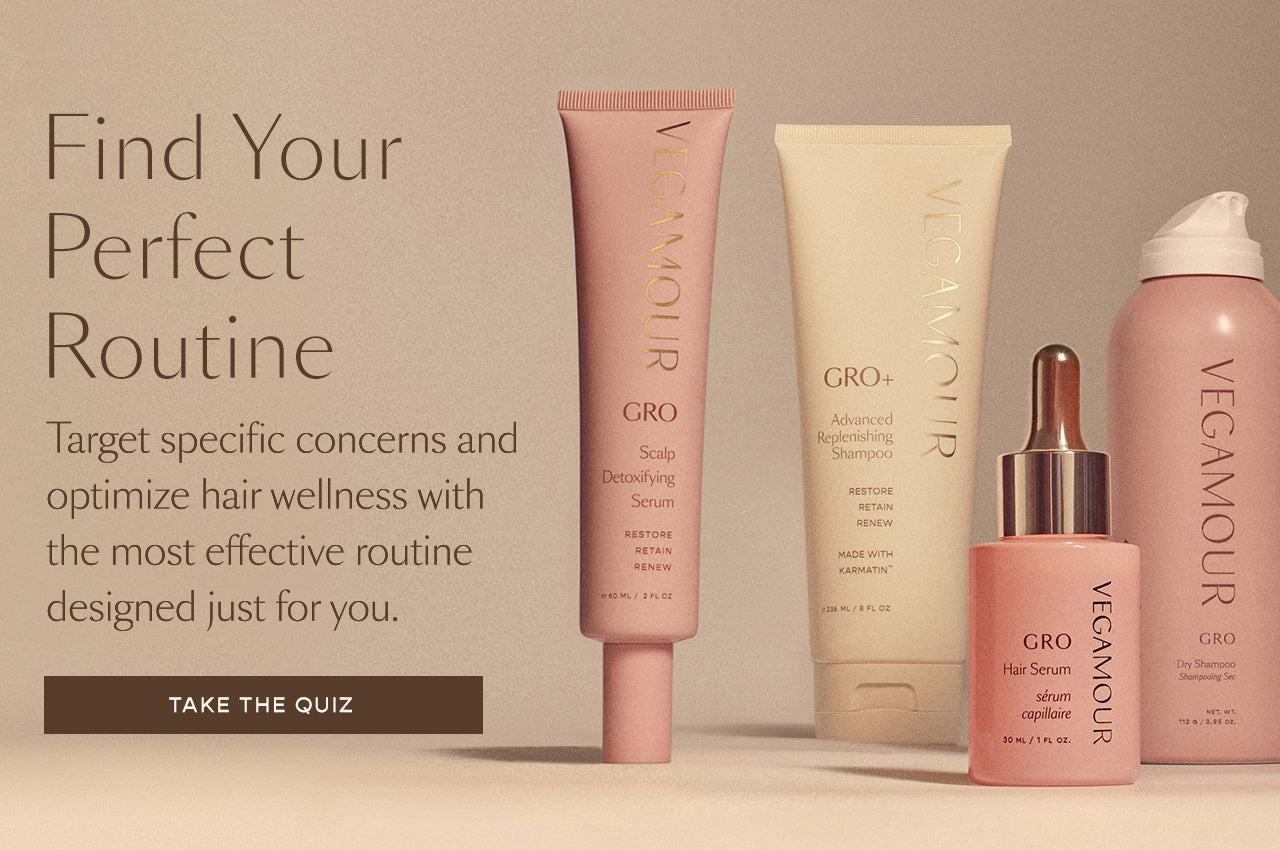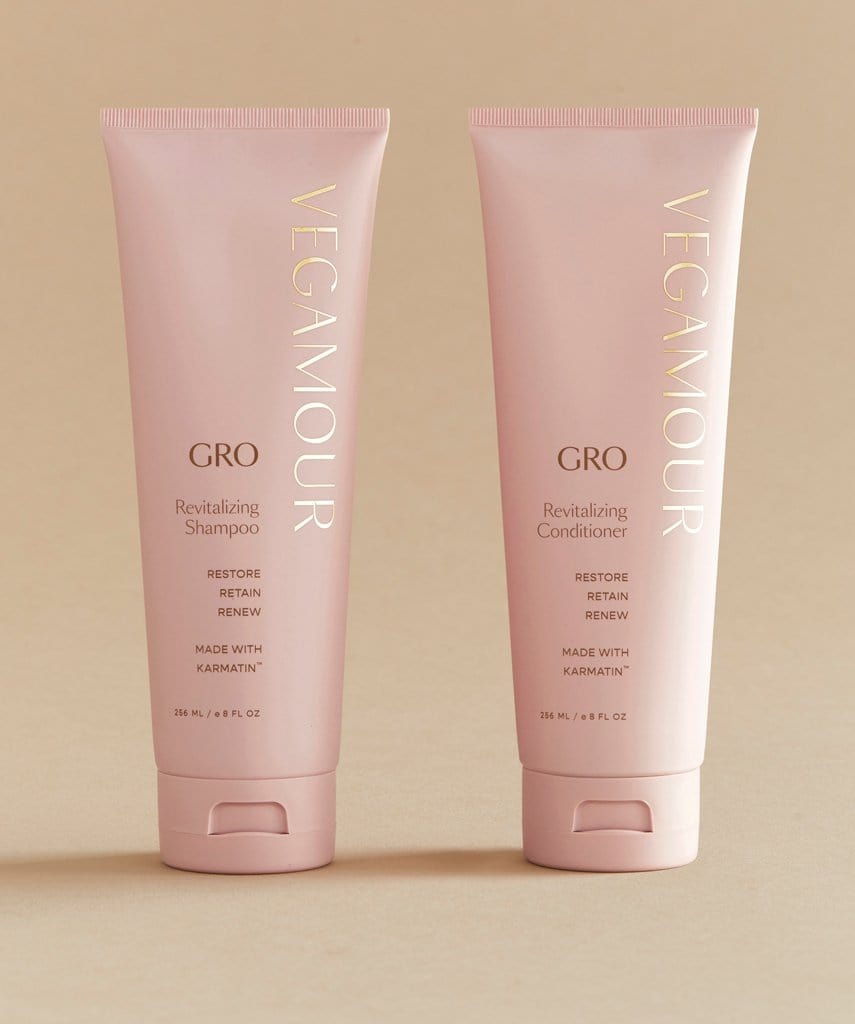Your Ultimate Guide to Curl Types
Straight hair is fairly straightforward — pun intended. But when it comes to curly hair, there's more to curls than just kinky, wavy and ringlets. Knowing details about your curl pattern can transform your hair in more ways than one.
Some curl types need more moisture, while others benefit from more protective styles. Knowing your curl type can lead to a better understanding of your hair's needs, so you can have a better relationship with it. If you're curious about curl types, this guide will help you untangle fact from fiction. Plus, discover the best all-natural and vegan products made to soothe and revive curly, frizzy and frazzled hair.
What Are Curl Types?
Whether you have straight or kinky hair, your hair type is determined by your genetics, but you can alter your curl pattern with chemicals or heat. Your visible curl pattern is in your DNA, but changing hormones and certain medications can also impact how your hair falls.
Decoding your curl type can initially be confusing because there can be several different hair textures on your head at any one time. For example, the hair texture around your crown might be flatter than the tightly coiled strands that frame your face. Thankfully, there is a system to decipher and identify your kind of curls. The amount of curl in your hair is determined by your hair follicles. The more asymmetric or oval-shaped each hair follicle is, the curlier your hair will be.
Read More: How the "Squish to Condish" Technique Can Benefit Your Hair
The Curl Pattern Chart
Cosmetologist and Oprah Winfrey's longstanding hairstylist Andre Walker designed The Hair Chart in the 1990s to classify the different hair types. It was initially created to help Walker recommend his product line to various clients, but the industry quickly adopted the curl type chart to classify multiple patterns and hair types.
According to Walker's chart, there are four different types of visible curl patterns:
- Type 1: Straight hair
- Type 2: Wavy hair
- Type 3: Curly hair
- Type 4: Coily hair
"These initial types are then further defined into subcategories based on the looseness or tightness of your curls," said hairstylist Alice Rawling. "The curl chart has numbers 1 to 4; number 1 represents the straightest hair, while 4 is the curliest hair type. It also has the letter A-C, indicating how loose or tight the curls can be. A is loose, while C is tight. The types of hairs can be straight, wavy, curly and coiled. Type A is the widest hair pattern, B is the medium and C is the slim hair pattern."
Read More: How and Why to Plop Your Curly Hair
Caring for Each Curl Type
According to Rawling, how you take care of your hair depends on your curl type. "Curly hair has drier strands and wavy hair tangles easily," she said. "Tight coils and kinks are susceptible to shrinkage, while slim-width hair curls are prone to breakage and damage. A person with curly hair should look for products that add definition and hydration to their hair; wavy hair needs more texture and grip. One should know their hair type to know the products to use for maintenance."
Type 2: Wavy
This bendable hair type ranges from fine to coarse in texture and has a definitive S pattern that lays close to the head.
2A Hair
People with a 2A hair type generally have a barely-there tousled texture that is easy to straighten with heat styling. Those with 2A-type hair should steer clear of heavy styling creams oils that might weigh each hair strand down.
VEGAMOUR's lightweight and volumizing GRO Hair Foam is formulated with powerful phytoactive to keep finer hair looking strong and long. Plus, it provides body and texture. Apply it to towel-dried strands to nourish the hair and scalp with ease.
2B Hair
This type of hair has natural volume and defined S-shape waves. Starting at the mid-lengths, the strands are thicker than type 2A hair and will be harder to straighten. For beachy waves with a touseled appeal, a texturizing spray that doesn't make the hair crunchy will give you a well-defined look.
2C Hair
The S-bends in 2C hair are defined and the hair texture is often thick and potentially frizzy. To reduce frizz and help curls keep their shape, use a gentle but powerful all-natural shampoo formulated without sulfates to make sure the strands stay full of moisture. A leave-in conditioner on wet hair will help boost natural waves and prioritize hydration.
Type 3: Curly
Type 3 curls can range from loopy, buoyant locks to tight corkscrew curls. The hair can be shiny, but it can also be prone to frizz.
3A Hair
3A curls are essentially loose and shiny. The diameter of each curl is approximately the size of a piece of sidewalk chalk and styling cream used on dry hair can help further define the curl type. To avoid frizz, avoid touching the hair too much and spritz strands with water when you need a refresh.
3B Hair
If you have fluffy, springy ringlets similar in size to a Sharpie marker or your index finger, you might have 3B hair. This type of curl shape can dry out quickly, so it's important to use conditioners that attract moisture to drench the strands. Sulfate-free products will help hold the moisture in and a styling gel will add definition.
3C Hair
This hair type features densely packed strands and tight corkscrew curls prone to frizziness and lots of volume. Again, sulfate-free products that offer lots of moisture will keep curls looking nourished and bouncy. Deep conditioning treatments will help add extra hydration.
Type 4: Coily
Afro-textured coily and kinky hair is naturally very dry and has a spongey, soft texture. It can be coarse, fine or wiry and strands can form a zigzag pattern or very tight, small curls. Those with very tightly coiled hair are prone to shrinkage.
4A Hair
If you have springy curls approximately the size of a crochet needle, you likely have 4A curls. For soft, pliable strands, use a curling cream that adds moisture and don't rub the curls dry with a towel. Deep condition the strands weekly and air dry them when possible.
4B Hair
4B curls tend to have sharp angles and a Z-like shape. You can mold and play with the hair to form different shapes and styles and use creams over sprays to ensure lots of moisture for the hair to drink up. Don't wash the hair too often to avoid depriving strands of natural oils. 4B hair will also drink olive oil, coconut oil and Jamaican black castor oil beautifully. This type of hair is perfect for palm-rolling styling techniques.
4C Hair
4C and 4B hair have a very similar texture, but generally, 4C hair is more fragile and the hair has a tighter zigzag pattern. This hair type can shrink up to 75% and dryness can cause major concern. The hair is versatile and can be teased and tweaked into beautiful, stand-out styles. 4C hair is prone to heat damage, so pump it full of moisture using only hydrating products.
Read More: How to Tame Frizzy Hair
Transform Your Curls
Knowing your curl type can transform how you care for your hair. If you want to figure out what type of curl you have, talk to a professional stylist and embrace those curls with a dedicated routine. Once you understand your hair, arm yourself with all-natural, hydrating products formulated without sulfates that preserve the wellness of your strands without the use of drying, harsh chemicals.
More From VEGAMOUR
- Shop: Thickening Hair Products
- Do Perms Cause Hair Loss?
- Eva Amurri's Healthy Hair Picks
- How Does VEGAMOUR Shampoo & Conditioner Stand Up to Curls?
- Is Sleeping With Wet Hair Bad for You? A Hairstylist Explains























